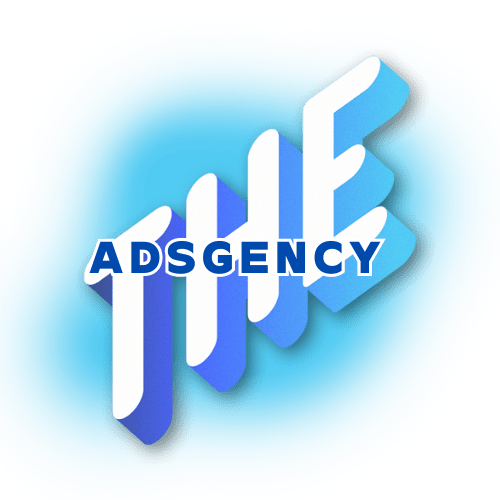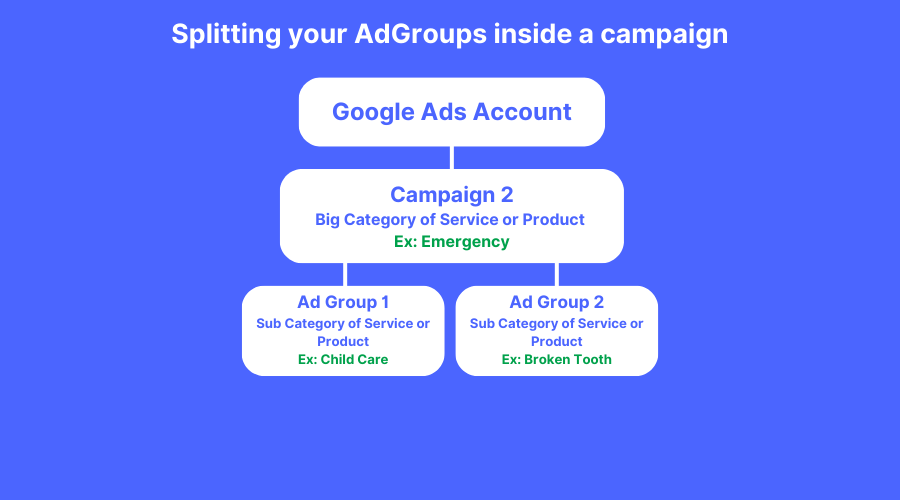If you’ve been wondering how to structure your Google Ads campaign for maximum performance, you’re in the right place. With over 2,000 clients and nearly a decade of experience, we have tested every structure imaginable. And guess what? There is a better way to do things—so let’s walk through it step-by-step.
The Google Ads Hierarchy: A Quick Refresher
Before you build your campaign, it’s essential to understand the core structure of Google Ads. Here are the three levels you must know:
- Campaigns: This is where you define your objective (leads, sales, traffic), set your daily budget, location targeting, and bidding strategy. Think of campaigns as the container that holds everything.
- Ad Groups: Inside each campaign are one or more ad groups. Ad groups group together similar keywords and the ads that should be shown for those keywords.
- Ads & Keywords: This is the final level, where the magic happens. Keywords trigger ads, and your job is to make sure that the keywords are tightly aligned with the ads and landing pages.
A well-structured account isn’t just easier to manage—it also drives better results by improving your Quality Score, click-through rates (CTR), and overall conversion rate.
Campaign Structure: One Campaign Per Service or Product Range
Let’s use a dental clinic business as an example. They offer services like:
-
Dental cleaning
-
Implants
-
Emergency
-
Veneers
A lot of businesses make the mistake of lumping all these into one campaign. This limits your ability to control budget and tailor messaging. Instead:
Create a separate campaign for each core service.
This allows you to:
-
Allocate budget more effectively (e.g., spend more on high-performing services)
-
Set different bidding strategies per service
-
Better align keywords and ad copy with user intent
Even if there’s some overlap between services, keeping them separate gives you more flexibility and clarity in your reporting. You will be able to see a specific report for each campaign giving you insights on which campaign is performing well and therefore worth spending more money on, and vice versa. Here we are not just keeping our structure clean and easy to read, we are segmenting our results to better understand what works and what does not in our strategy.
Ad Group Strategy: Break It Down Further
Within each campaign, create ad groups that reflect specific sub-services or keyword themes.
If you have an Emergency Services campaign, your ad groups might include:
-
Broken tooth
-
Gum bleeding
-
Child care
-
Adult care
-
Surgery
This helps in:
-
Crafting hyper-relevant ads for each search query
-
Improving CTR and lowering CPC
-
Improving landing page alignment (more on this later)
The tighter the theme of your ad group, the more likely your ads will resonate with what your audience is searching for. Just like the previous step of segmenting campaigns, we are now segmenting topics inside the campaigns.
How Many Ad Groups and Keywords?
There’s no magic number, but here are some guidelines:
-
Ad Groups: Aim for 3–10 per campaign, depending on how many keyword themes exist.
-
Keywords per Ad Group: 5 to 20 well-chosen keywords work well at first, add more later using Serch Terms insights.
Don’t try to squeeze everything into a handful of ad groups. Instead, favor more specific groupings. If someone searches for “child care dentist South Miami” and your ad says “Best Child Dentist in South Miami” you’re far more likely to get the click than if your ad just says “General dental clinic”.
Specificity drives performance.
Responsive Search Ads: One Ad, Many Variations
Responsive Search Ads (RSAs) have changed the game. Instead of creating multiple static ads, you create one RSA per ad group with multiple headlines and descriptions.
Google automatically tests combinations and learns what performs best. Here’s what you should do:
- Include specific headlines that match the keywords in the ad group
- Include broader service headlines to appeal to bigger-picture intent
- Use ad assets like site links, callouts, and structured snippets to boost ad real estate
For example, if the ad group is “Broken Tooth” your ad might include:
- Headline: “Broken Tooth Dentist Today”
- Headline: “Get Your Broken Teeth Fixed”
- Description: “Got a broken tooth? Schedule your appointment as early as today!”
Match Ads to Landing Pages
Your ad is only half the battle. If you send traffic to a generic homepage, you lose the user.
Send people to pages that match their intent.
-
Searching for “child dentist”? Land them on your child dentist service page.
-
Clicking on “Veneers”? Land them on a veneers service-focused page.
If possible, create dedicated landing pages for each ad group. This improves your Quality Score, reduces bounce rates, and increases conversion rates. Plus, Google rewards relevance.
Think about it: If your ad says “Custom implant plan” and your page is titled “Get your custom dental implant plan for free” that consistency builds trust.
What About Performance Max and Other Campaign Types?
This article has focused on Search campaigns because they offer the most control and clarity—especially for beginners. Once you’ve built a profitable Search campaign, the next logical step is to scale with Performance Max.
Performance Max campaigns target across all Google networks: YouTube, Display, Search, Discover, Gmail, and Maps. While powerful, they require a different structure and strategy.
Start with Search. Master it. Then expand.
Learn more on how to optimize your Performance Max campaigns.
Final Thoughts
Structuring your Google Ads account correctly is foundational. It impacts everything from how much you pay per click to how many leads you generate.
To recap:
-
Use one campaign per service or product
-
Create focused ad groups per keyword theme
-
Align ads and landing pages tightly
-
Use RSAs with relevant headlines
-
Add ad extensions (site links, callouts, etc.)
And if all of this sounds a little overwhelming? That’s okay—we do this all day, every day. Our agency can handle everything from setup to optimization. Book a free strategy call with us and let’s see how we can help you grow.
FAQ – How to Structure Your Google Ads Campaigns
How many keywords should be in an ad group?
Should I still use Single Keyword Ad Groups (SKAGs)?
No. With Google’s current matching behavior, you should instead use single topic or themed ad groups.
Can I use one landing page for all services?
You can, but your conversions will suffer. Dedicated landing pages perform better.
Do I need a separate campaign for each service?
Yes. It improves control, reporting clarity, and ad relevance.
What’s the best campaign type to start with?
Search. Once it’s profitable, expand into Performance Max for broader reach.



